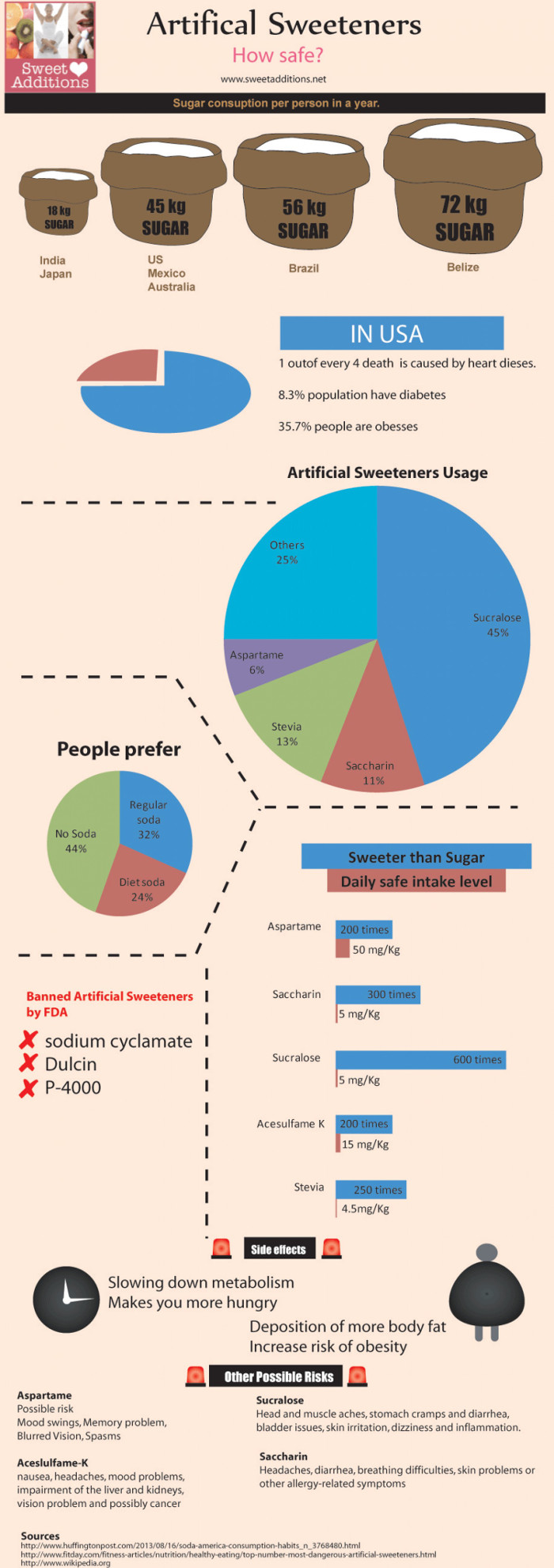Also known as sucralose, Splenda is primarily derived from sucrose or sugar. Chlorine molecules are being added to this sugar molecule. The 3 chlorine molecules which are added to such substance chemically react to turn the sucrose molecule into the fructo-galactose molecule.
What Is Sucralose
While this is a form of molecule which does not take place naturally, the body is incapable to metabolize or process the molecule once ingested. Therefore, while sucralose is not processed by a person’s body, it apparently contains no calories. On the other hand, critics disagree that it will actually contain calories if only the human body was capable of ingesting it. In addition to that, they point out that being unable to process the chemical might lead to some health risks.
When the product has been accepted by the FDA, they examined that sucralose didn’t cause any reproductive, carcinogenic or neurological problems, which were based on over a hundred studies that were conducted more than twenty years. However, some newer studies have lifted up certain concerns.
Dangers
1. Migraines.-Sucralose is likely to trigger episodes of migraines. This is according to the professional researchers of a certain institution. According to experts, health professionals must take note of the possible causal connection between migraines and sucralose in each time they take the health history of their patients, who are suffering from migraines.
2. Some Gastrointestinal Issues-A certain study that has been published in year 2002 has concluded that high sucralose doses may result to damage on the DNA within the mice’s gastrointestinal organs. The provided dosage was around 2,000 mg for every kilogram of the total body weight. Based on a professional organization, the suitable consumption for sucralose should be 9 mg for every kilogram of the total body weight every day. Also, based on the results of the study, the researcher recommends more broad study about sucralose as well as thirty-eight other food additives.
3. Thymus- A few other concerns have been presented with respect to the dangers of sucralose on the person’s thymus. A small organ located within the upper part of the chest, the thymus helps the human body in the production of WBC (White Blood Cells) during the childhood stage. There are also some studies performed on rats, which were provided with substances at very high doses. The studies have found some reduction in average thymus weight. However, the report has also noted that sucrolose will not be categorized as hazardous under the criteria of NOHSC for the classifications of hazardous substances. The provided sucralose amount provided to the rats was 3,000mg for every kilogram of body weight on the daily basis for 28 days.
Additional Concerns- The primary concern presented by the advocates of anti-sucralose includes deficiency in long-term studies for human toxicity. Some consumers have also allegedly detail some specific health issues that occur through the consumption of sucralose, such as headaches, dizziness, upset stomach, nausea and certain digestive issues.
By knowing about the possible dangers of sucralose, you should realize how important it is to know about its proper consumption.
